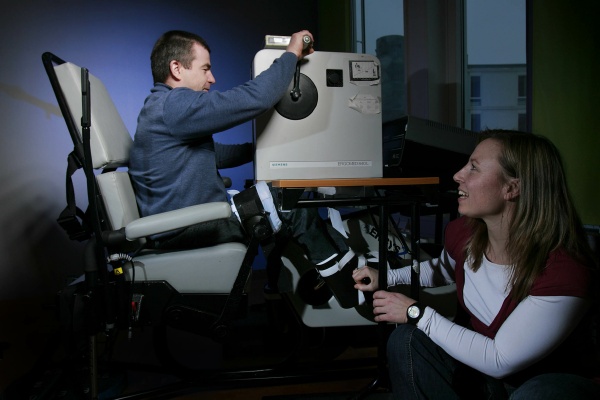A new type of exercise equipment, first designed for actor Christopher Reeve, who played "Superman" in the 1977 film and its three sequels, can prevent serious lifestyle illnesses in paraplegic patients, according to a new exercise study.
In the study completed last year, patients who were paralyzed from the chest or waist down experienced an average increase in their oxygen uptake by 25 per cent and in their heart pumping volume by fully 37 per cent – after just eight weeks of training on the bike.
Patients who are unable to walk after a spinal injury have a poorer quality of life and shortened lifespan compared to non-paralyzed counterparts. Sitting passively in a chair makes people susceptible to weight and digestion problems, lower bone density, diabetes and heart/circulation problems.

“It’s the circulation problems that are the most difficult for them, and it’s circulation problems that kill them”, says Jan Hoff, a professor of medicine at Norwegian University of Science and Technology (NTNU) in Trondheim.
But it doesn’t have to be that way. The new type of exercise equipment, combined with a new training plan, makes it possible for spinal patients to exercise themselves back to health – at least as far as the heart is concerned.
Not just a stationary bike
The training equipment is called Ergys 2. Christopher Reeve, the "Superman" who became a quadraplegic after a riding accident, financed the development of the rehab equipment to improve his own health but he died of heart failure at 52 years old. Nevertheless, his efforts gave the world’s spinal injury patients new rehabilitation equipment.
The Ergys 2 is a stationary training bicycle, where the patient’s legs and feet are strapped to a leg holder and pedals. Electrodes are then fastened to the patient’s thigh and seat muscles, and electrical impulses trigger the muscles to contract and relax. The impulses are computer controlled to guarantee the best possible effect.
It may seem like artificial training but it is real enough because the patient’s own muscles do the work and it is movement that demands energy. When that happens, the blood flow increases and the pulse goes up. The exercise has an effect on muscle mass, muscle strength, oxygen uptake and the heart’s pumping volume.
Hard workouts, few repetitions
The original just worked with the legs and buttocks but the more muscle groups that are involved, the greater the blood flow, and the greater the benefits for the heart. That’s where NTNU researchers came into the picture. They found a way to supplement the Ergsys 2 with an arm cycle, extending the benefits for patients who can use their arms without help.
The patients who participated in the training study were also able to simultaneously exercise their shoulders, arms, rump and legs, in a high intensity interval 4 x 4 pattern. That translates to four minutes of hard exercise followed by three to four minutes of easier training – with the entire procedure repeated four times per session, three days a week.
NTNU’s Professor Jan Hoff developed this interval approach several years ago, along with his colleague Jan Helgerud. He uses this interval technique for most types of physical training.
“Hard workouts, few repetitions. There is no other training approach that gives better results in improving oxygen uptake or muscle strength than that,” he says.
A preventative approach
Never before has research documented such a significant effect on the heart and circulation in patients with spinal injuries, as the study has shown. There has been relatively little research overall on spinal patients and exercise, in terms of what kinds and how much exercise actually give beneficial results.
The patients in this study were so out of shape when they started that they were unlikely to reach a normal level. But Hoff doesn’t think it’s an impossible goal.
“We really don’t know, but there’s no reason to believe that the improvements will stop where they are now,” he says.
Hoff doesn’t want to speculate on the implications of his research on the treatment of Norwegian patients paralysed from spinal injuries.
“We’re researchers, not therapists,” he says. “But it’s clear that what we’re doing has consequences, both for Norway and for the world. And that gives us a great opportunity to prevent lifestyle related illnesses.”
Unplugged?
Under Hoff’s guidance, Berit Brurok conducted the study for her master’s thesis in exercise physiology. Brurok is continuing her work in this area as a part of her PhD research, in cooperation with Dr. Tom Tørhaug at St. Olavs Hospital in Trondheim. Because the Ergys 2 is expensive, and because it also requires assistance to use, the researchers are looking to see if the results from the study can be transferred to other activities. Would it be possible to do something similar in a wheelchair? Could it be done without electricity?
If they succeed, it could mean a better quality of life and a longer life for many people. In the USA alone there are close to 500,000 spinal injury patients.






Comments